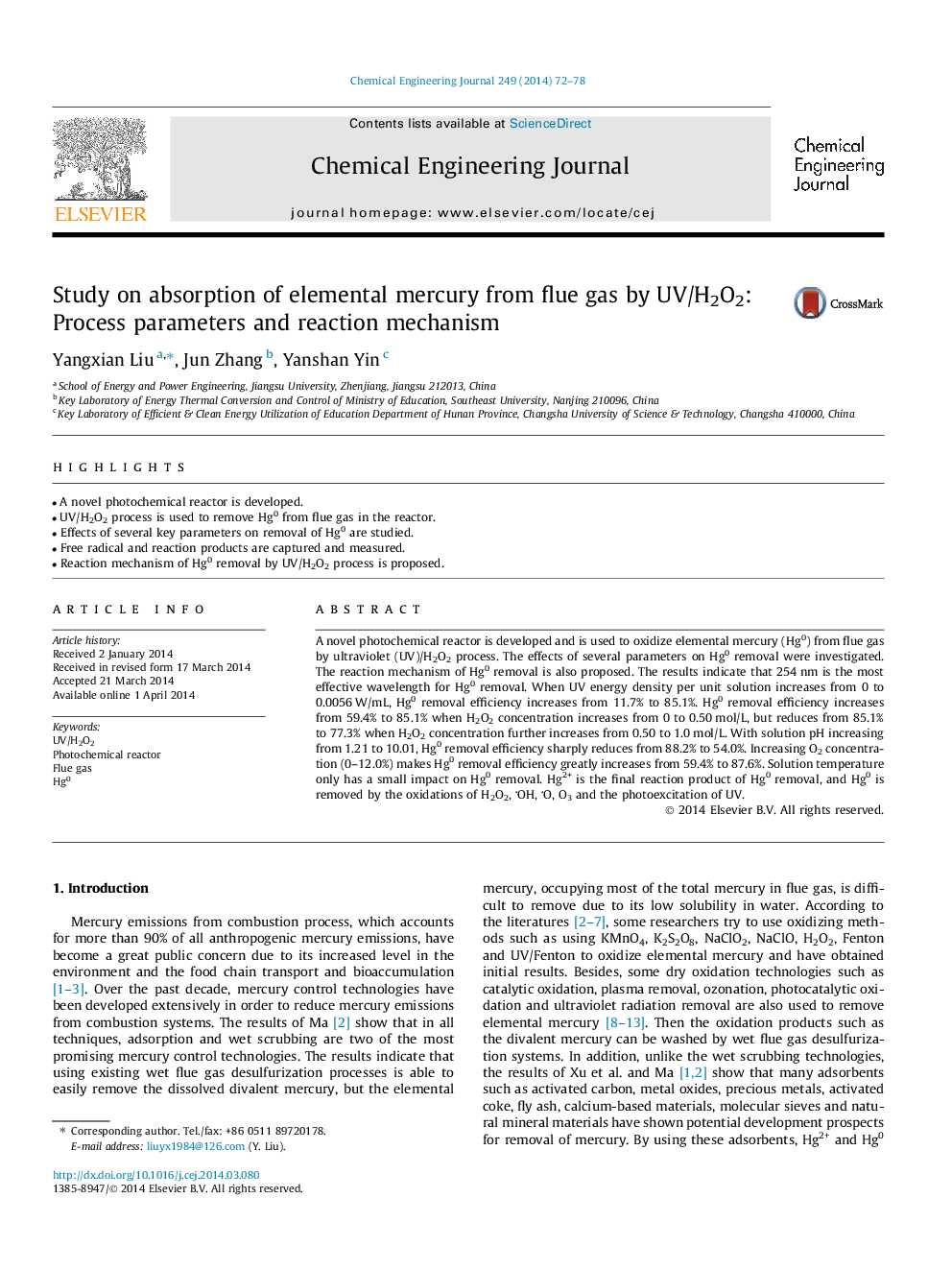| Article ID | Journal | Published Year | Pages | File Type |
|---|---|---|---|---|
| 147399 | Chemical Engineering Journal | 2014 | 7 Pages |
•A novel photochemical reactor is developed.•UV/H2O2 process is used to remove Hg0 from flue gas in the reactor.•Effects of several key parameters on removal of Hg0 are studied.•Free radical and reaction products are captured and measured.•Reaction mechanism of Hg0 removal by UV/H2O2 process is proposed.
A novel photochemical reactor is developed and is used to oxidize elemental mercury (Hg0) from flue gas by ultraviolet (UV)/H2O2 process. The effects of several parameters on Hg0 removal were investigated. The reaction mechanism of Hg0 removal is also proposed. The results indicate that 254 nm is the most effective wavelength for Hg0 removal. When UV energy density per unit solution increases from 0 to 0.0056 W/mL, Hg0 removal efficiency increases from 11.7% to 85.1%. Hg0 removal efficiency increases from 59.4% to 85.1% when H2O2 concentration increases from 0 to 0.50 mol/L, but reduces from 85.1% to 77.3% when H2O2 concentration further increases from 0.50 to 1.0 mol/L. With solution pH increasing from 1.21 to 10.01, Hg0 removal efficiency sharply reduces from 88.2% to 54.0%. Increasing O2 concentration (0–12.0%) makes Hg0 removal efficiency greatly increases from 59.4% to 87.6%. Solution temperature only has a small impact on Hg0 removal. Hg2+ is the final reaction product of Hg0 removal, and Hg0 is removed by the oxidations of H2O2, OH, O, O3 and the photoexcitation of UV.
